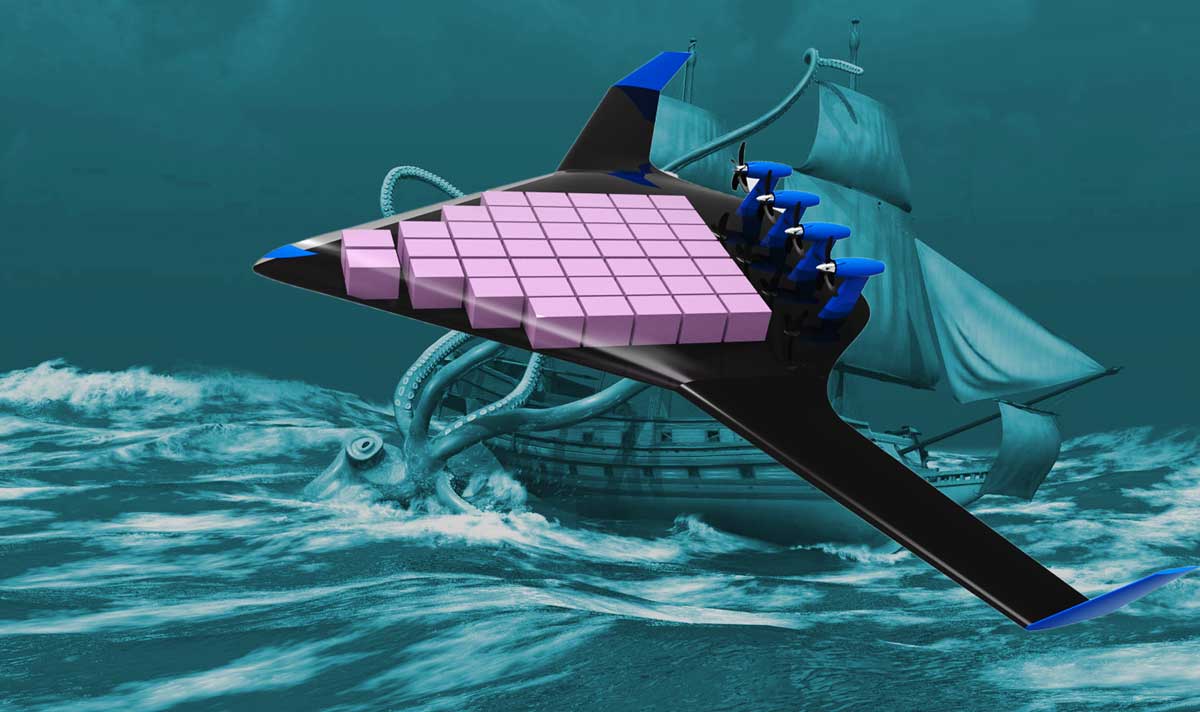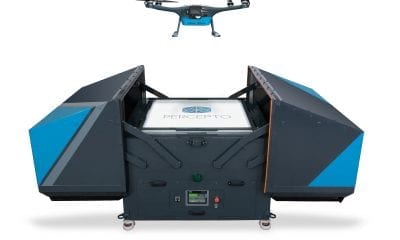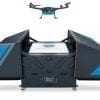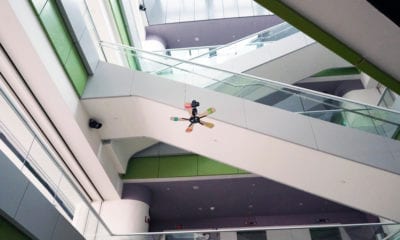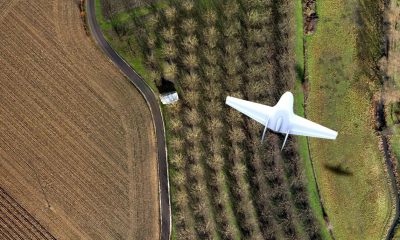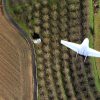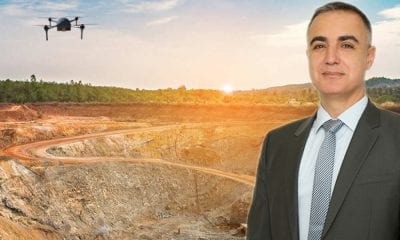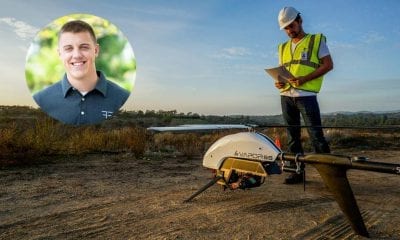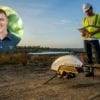This Leviathan Could Disrupt Unmanned Global Air Freight: Natilus CEO Aleksey Matyushev
It’s a project so outlandish, of such biblical proportions and with such an incredible potential for disruption, that it emanates essence of Elon Musk. As we talk to CEO of global air freight drone development startup Natilus, Aleksey Matyushev, it becomes clear that with their small but tight “gun” team, Natilus is sure to succeed in getting their leviathan project off the ground – both metaphorically and literally.
Can you tell us about the history and origins of Natilus as a company?
About 4 years ago, the team started an industrial design firm – our first product was an overnight success on Kickstarter. We did design work in the US and manufacturing out of Asia. As an industrial design firm, we always had problems in getting the product out of Asia – ships were too slow but inexpensive and air freight was timely but too expensive. We pushed the problem aside.
After the industrial design firm started to take on other clients they started to express the same frustration. One night, we were grabbing some drinks and chatting about this reoccurring problem and the idea for Natilus was born. Meaning, split the end costs to the consumer between air and sea freight by introducing large scale drones into the mix.
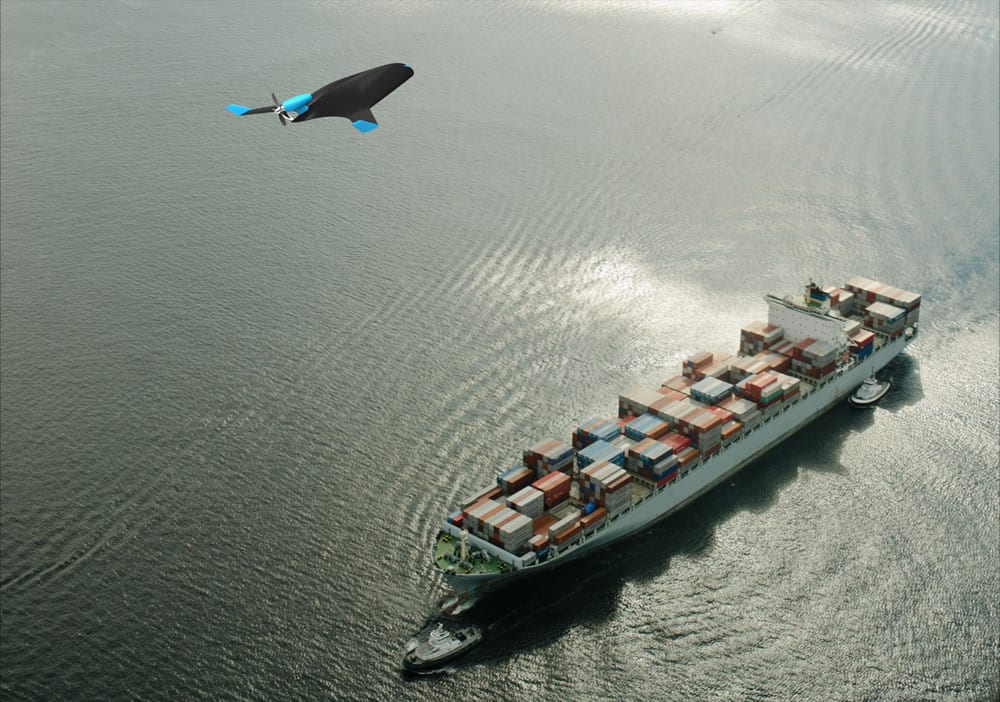
Source: Natilus
You are planning on creating a working prototype, can you tell us how that is progressing?
The prototype is complete as of late December 2017. Low speed taxi testing was conducted early February 2018. We are modifying the prototype right now due to some problems that arose as a result of that testing, then we should be back in the water for medium speed taxi testing at the end of this month.
What targets have you set for that prototype, payload, distance and so on?
Although a qualitative metric – we needed the prototype we build to be as large as it can be given the constraints of building it in a one year period with a limited team size and funding. We have tried to push our luck with a 30 foot, 2200 pound prototype – about the size of a military Predator Drone.
After the size was determined, we consulted one of our future customers as to which routes were useful – that set the range of 2000+ NM. The payload is a result of the vehicle weight/size (as normal with aircraft design).
How close are you to finalizing the design of the 12,000-pound drone?
In aircraft design there are three phases: conceptual, preliminary and detail design. We are about 80% done through conceptual design and moving into preliminary (bones and systems) design in the next month or so.

Source: Natilus
Can you tell us about your project team, size, background?
We like to keep teams very small and work them extra hard. We want to continue that trend as we grow as well. Right now the team is 5 full time engineers/technicians and about 7 part-time consultants. The 5 full time engineers/technicians typically handle 90% of the workload and we use our consultants for ‘science’ questions. The core team has deep aircraft design and testing roots from the industry. In total the team has 25 aircraft programs under their belts to include military, commercial and general aviation – the average age of one of us is about 30 yrs; that’s pretty cool.
It still amazes our customers and investors that a small team of 5 could replicate the General Atomics Predator drone (same size/weight) in about one year at a fraction of the cost.
What type of engine or power source is planned for the prototype?
If anyone does the math for large scale vehicles with range above 200 miles with any serious payloads (750lbs+) , there is one fundamental conclusion – it cannot be electric. Our prototype is powered by a 100 HP Rotax 912is General Aviation engine to give us the range that our customers desire.
Can you share any details on the airframe, or materials?
We use the auctioned off wood and plastic from our competitors’ defunct companies who wanted to make large and long range payload electric drones for our airframe; we reverse-engineered the PCB boards but re-use everything else to make sure it actually gets good use in a flying platform… just kidding.
The airframe is built via ‘Rutan’ like methods – wood and aluminium wrapped in room temperature cure fiberglass. We use mold-less construction techniques similar to how one-off fiberglass boats are built. It doesn’t make for a pretty prototype but it costs next to nothing and allows us to get to flight quickly.

Source: Natilus
Where and how do you plan to trial the prototype?
Natilus has (to our knowledge) the only approval to test large scale drones in the San Francisco Bay Area – that’s where we trial our prototype. Because Google/Facebook/Airbus have lots of money, they can go onto test ranges with runways. As a small start-up, we didn’t have that much cash to burn on a test range so we made our prototype a seaplane and created our own 24 square mile test range in North East San Francisco Bay.
Are there or will there be any collaborative elements to the 12,000-pound or the 2200-pound drone?
Good question, a couple. The strongest collaborative element is the autopilot. The Natilus autopilot is built from the ground up in hardware and software for FAA regulatory approval use. Short of what is out there in the military drones, we are one of the only commercial companies that holds that type of technology.
Other than that it’s team execution – we are a lot better at installing and instrumenting engines, and our regulatory expertise.
We briefed our answers early on – the way the prototype looks is a function of how much money we raised and how small the team is. There was always a two-way communication and understanding that we will change the look of the prototype completely once we get past the prototype.
How many 12,000-pound aircraft do you plan to build as part of the prototype project?
Unfortunately I can’t disclose the number since it hasn’t been announced yet – but it is very large. Right now, there is only going to be one 2200 pound prototype.
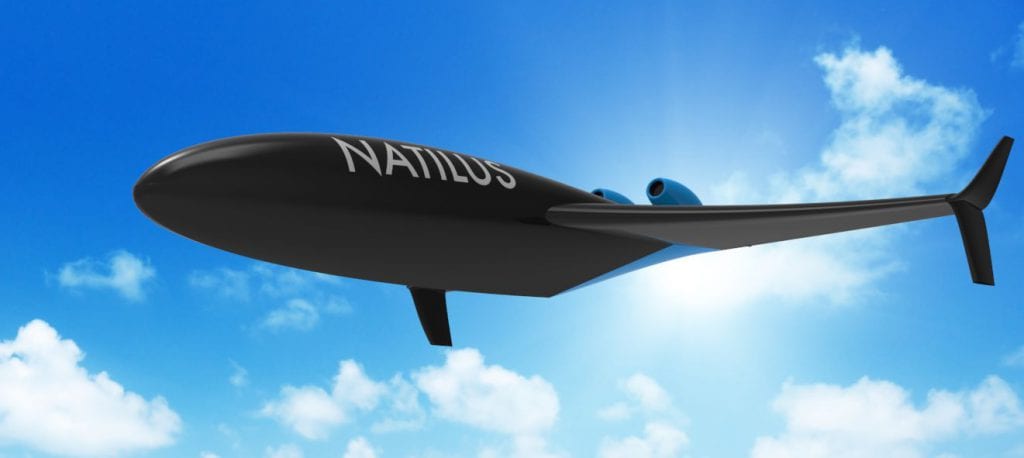
Source: Natilus
Can you share any information on the flight control of these UAVs?
Yep, electrical things push mechanical things to make other mechanical things move. I guess from a top level perspective – we have linear/rotary actuators move mechanical surfaces. The servos tend to be quite expensive and from the typical aerospace grade suppliers controlled by our custom autopilot. Flight control actuation has always been a straight forward problem short of the large aero-forces which are countered by clever mechanical linkages.
When commercially developed where would these delivery UAVs land?
Landing strips. We have VTOL on our radar but that is quite a bit of an R&D exercise we have yet to complete.
How much runway do you anticipate being needed for a full-size, fully laden UAV?
We are not VTOL yet (working on it), so we have comparable field performance as other aircraft our size.
Do you see opportunities in other industries for Natilus?
As of the time of this writing, Natilus is strictly focused on freight and we have had interest from global transporation companies (can’t say who). When we decide to launch cars into LEO (Low-Earth Orbit) using our hypersonic drones, we will be sure to brag about it. After cars, we should probably do food delivery from Singapore to London.
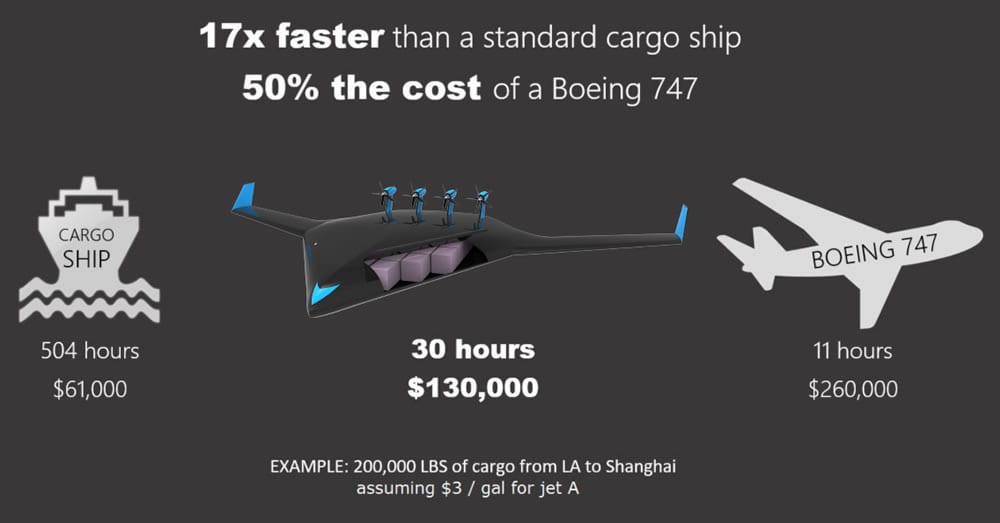
Source: Natilus
Where will you be exhibiting next?
We don’t exhibit right now – that’s not our thing and most importantly, it doesn’t create value for our company. Our customers and investors have access to our prototypes and warehouse but we limit it right there. We have been known to help some middle schoolers on their drone projects once in a while but that’s where it stops.
We get requests all the time for people we don’t know or (semi) investors/customers to visit us but we have realized that it is all a distraction. For our team, our workspace is where you come to work and should not become a zoo.
Overall how do you see the UAS/UAV technology expanding or changing in the next 5 years?
I guess two predictions:
- We will see if the electrical flying taxis make sense
- We will see if large scale customers accept UAS/UAV solutions (as well as their end consumers)
The next 20 years?
I’ll try two more predictions:
- I think the FAA and regulators will come to peace with large scale aircraft (but probably not the ones over 50 pounds)
- I think humanity will come to terms with autonomous vehicles driving them – probably cars but never aircraft. We always watch the Sci-fi series and whichever one it may be, even in outer space, there is always a pilot on the craft. Maybe ‘flight’ autonomy will be OK for cargo though.
What companies excite or inspire you?
Planet, Sukhoi, Intel, LinkedIN, and AirBnB.
Anything else you’d like to add?
Have to get back to work!
About Aleksey Matyushev – CEO of Natilus Inc.
 Aleksey has led multiple engineering teams in programs involving Lockheed’s infamous Skunk Works, classified drone programs, and over 8 general aviation aircraft. After feeling the frustration with the aerospace industry, Aleksey created an industrial design firm which was an overnight Kickstarter success and went on to launch many products featured on Amazon, Macworld and other outlets. Natilus was a brain child of his which was born out of the frustration of the firm’s clientele who wanted products delivered faster than sea freight but at a lower cost than current air freight can provide.
Aleksey has led multiple engineering teams in programs involving Lockheed’s infamous Skunk Works, classified drone programs, and over 8 general aviation aircraft. After feeling the frustration with the aerospace industry, Aleksey created an industrial design firm which was an overnight Kickstarter success and went on to launch many products featured on Amazon, Macworld and other outlets. Natilus was a brain child of his which was born out of the frustration of the firm’s clientele who wanted products delivered faster than sea freight but at a lower cost than current air freight can provide.
Since then, Natilus has been supported by some of the most high-profile Silicon Valley investors and has gone to recruit an incredible diversity of aerospace, Wall Street and air freight talent with the sole goal of reducing the cost of air freight through the use of large scale drones.

